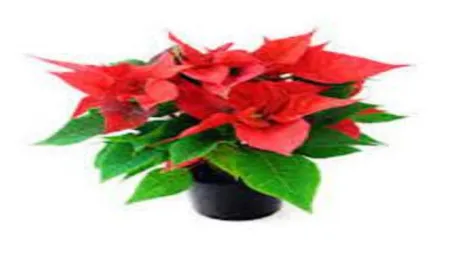History, Facts, and Care of Poinsettias
In the 14th and 16th centuries the Aztecs used the sap of poinsettias (Cuetlaxochitl in Aztec) to control fevers and used the bracts (modified leaves) to make a reddish dye. The last Aztec king took cuetlaxochitl into what is now Mexico City because they could not grow in the high altitude. A botanist, Juan Balme mentioned the poinsettia plant in his writings in the 17th century. The German botanist, Wilenow, assigned the scientific name Euphorbia pulcherrima to poinsettias because he was dazzled by its color.
Joel Roberts Poinsett, an avid botanist, was appointed as the first United States Ambassador to Mexico in 1825 by President John Quincy Adams. Poinsett wandered the Mexican countryside looking for new plant species. In 1828 he came across a beautiful shrub with large red flowers. Poinsett took cuttings of the plant and sent them back to his South Carolina greenhouse. He began to propagate the plants and sent them to friends and botanical gardens. They were first sold under the name Euphorbia pulcherrima. However around 1836, William Prescott, a historian and horticulturalist, named the plant Poinsettia in honor of Poinsett’s discovery. Other names for poinsettias include lobster flower and flame-leaf flower.
John Bartram, a nurseryman from Pennsylvania, is believed to be the first person to sell poinsettias. In the early 1900’s the Ecke family of southern California grew poinsettias outdoors for use as a cut flower and landscape plant. The Ecke family began propagating poinsettias in the greenhouse and today grows over 70% of all poinsettias for sale in the United States and about 50% of worldwide sales.
Poinsettias are actually perennial shrubs in nature, growing 10 to 15 feet in height. There are greater than 100 varieties of poinsettias today. Poinsettia bracts (the colored leaves) are traditionally red although today you can find them in white, pink, burgundy, orange, purple, marbled, and speckled.
Poinsettias are not poisonous by ingestion. An Ohio State University study showed a 50 pound child would have to eat greater than 500 leaves to reach a harmful effect. In addition, poinsettia leaves have a very unpleasant taste, likely discouraging children from eating many leaves. If children eat the leaves they may get an upset stomach and vomit. If pets eat the leaves they are more likely to vomit and have diarrhea than children, but will not be poisoned. Since the milky sap in the plant is a latex, it is possible for humans with allergies to latex to get a skin reaction from touching the leaves. Getting the milky latex sap in your eye can cause temporary blindness so be careful handling the plant.
Historically, poinsettias were used by Aztecs to make a purplish dye from the colorful “flowers” for use in textiles and cosmetics. The sap was also used in a preparation for treating fevers.
December 12th is National Poinsettia Day commemorating the date of Joel Poinsett’s death in 1851.
The legend of the poinsettia plant is that a small Mexican girl wanted to present a gift to the Christ Child at Christmas Eve services, but she had nothing. Her cousin said that even the most humble gift, if given in love, will be acceptable to His eyes. While on their way to Church she gathered a handful of common weeds. When she presented the bouquet at the manager the bouquet suddenly turned into blooms of brilliant red. All present thought this to be a miracle and from that day forward the bright red flowers were known as the Flowers of the Holy Night for they bloomed each year during the Christmas season.
Proper care of poinsettias after purchase include watering pots thoroughly (to saturation) then allowing the potting media to dry out until the next watering. Never let the plant stand in water. Use room temperature water. Keep temperatures between 60 and 70 degrees Fahrenheit. Place plants near a sunny window, but out of direct sunlight and away from hot and cold drafts. Plants prefer high humidity like in their tropical native environment. The flowering bracts (the colored plant parts are not flowers, but bracts) can stay on the plants for many weeks if kept properly.
